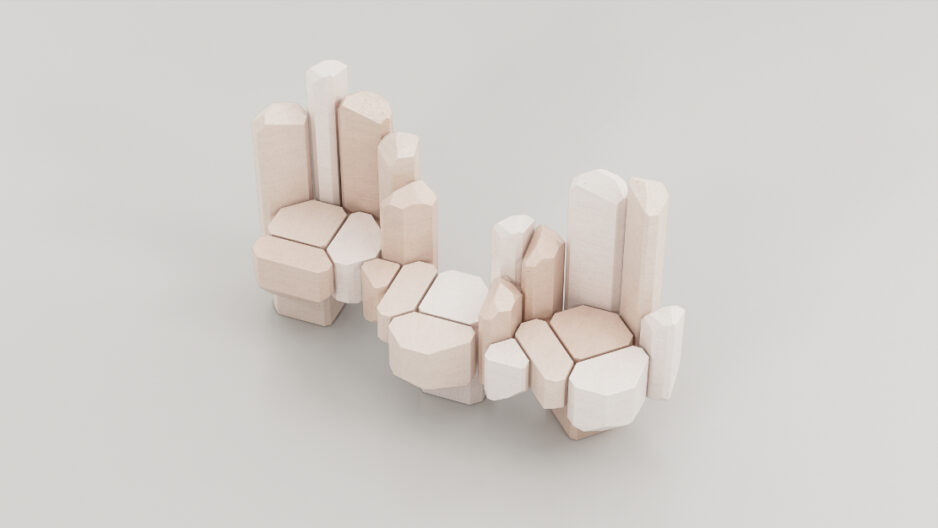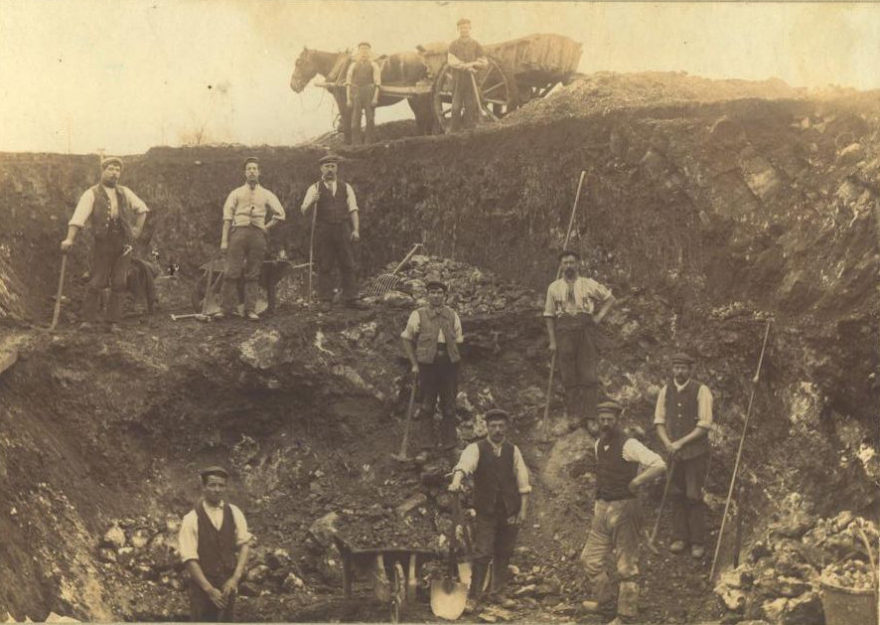Crystal Furniture
Yate, South Gloucestershire
Contemporary designer and maker Phil Cuttance‘s series of permanent site specific public seating responds to the area’s history of celestine quarrying. Celestine is a mineral that in the past was used in the production of flares, fireworks and even talcum powder and toothpaste. Yate developed significantly during the 20th century as a centre of manufacturing and by 1960 Yate was the biggest producer of celestine in the world. The site of the new development (and artworks) was once a location for celestine mining. During his research, Phil delivered a series of free participatory making workshops for local residents, including inside a temporary artwork by Jo Lathwood (another artist commission for the development). Concept designs were developed in 2021, with the detailed designs and refinement taking place over the next few years, as planning consent was approved and the public spaces and houses were built. You can read more about Phil’s design process on his blog. The seating is due to be installed in Autumn 2025.
The development Ladden Garden Village occupies 100 hectares of former farmland between the town’s outer suburbs and the more rural aspect at Yate Rocks to the east and Tanhouse Lane to the north. The development includes 2,450 new homes, a new Community Centre and local centre with retail, a new primary school, care home and employment space. Due for completion in 2030, Ladden Garden Village establishes new pedestrian and cycling routes and bridleways across the site, significant new public realm and open spaces including new play areas.
These creative projects have enabled commissioned artists to explore the physical landscape and heritage of the area and support development of the creative infrastructure within the town. Key aims of the programme were to ensure that the approach supports best practice in public realm commissioning, and prioritises quality and innovation.
Suzanne was appointed by the project landscape architects LDA Design as their art consultant, to research and write the Public Art Plan setting out how this arts programme will be delivered, on behalf of Heron Land. In her role Suzanne oversees creative project delivery on behalf of Barratt Homes, who are constructing the development.
About the artist
Phil Cuttance is a designer and maker originally from New Zealand. His cast sculptural and functional objects in casting materials such as Jesmonite, as well as other casting mediums, have complex forms and sharp lines meaning it is sometimes assumed they have been made using CAD software, CNC machine or 3D printing, when in fact they are all handmade. Phil established his London studio in 2009 and works between London and Auckland making artwork and running casting workshops. His work to date has included large scale sculptures, cabinets, tables and planters as well as vases, trays and bowls. Phil has produced performance-based making demonstrations at Milan Furniture Fair in 2016, Art Basel Miami in 2012 and Cheongju Craft Biennale in 2015. His research-based projects have been recognised internationally, with highlights including a nomination for Design Museum London’s Designs of the Year and a residency at The Barbican in London. He has recently developed a rotational casting technique which will allow him to cast larger and more visually complex objects using a large casting ‘machine’. He plans to set this machine up and create objects ‘live’ where the public can see not only the finished object but the whole process. Past clients include designer Paul Smith and the UK High Commission in Seoul, Korea. Phil’s future projects include international Artist residencies, and an online workshop with Domestika, the world’s largest workshop platform. Follow Phil on Instagram @philcuttance



